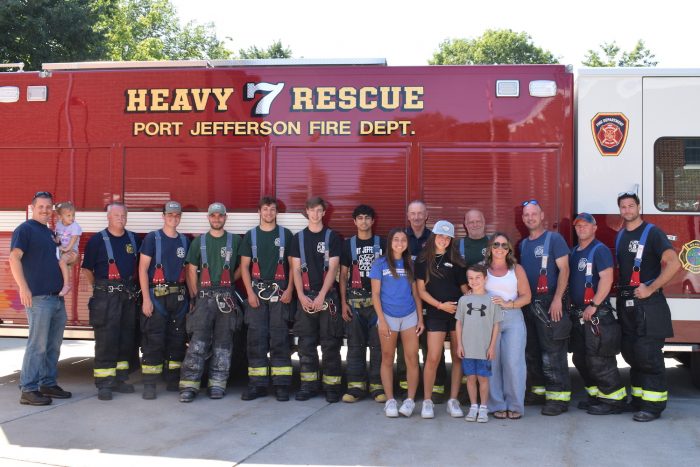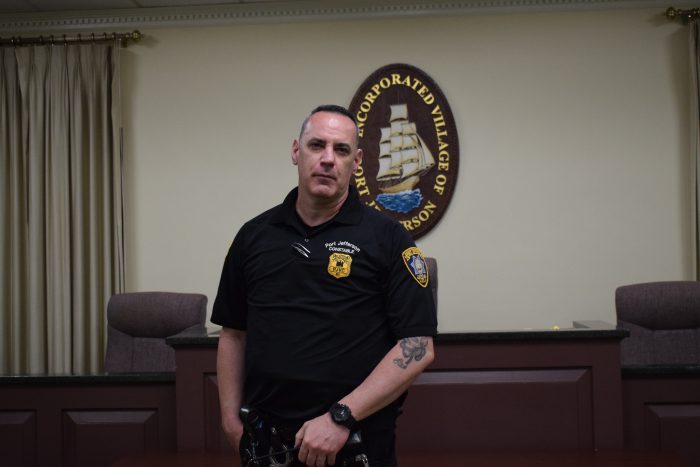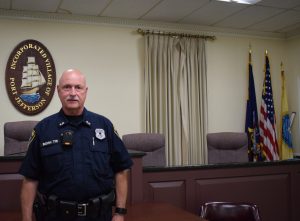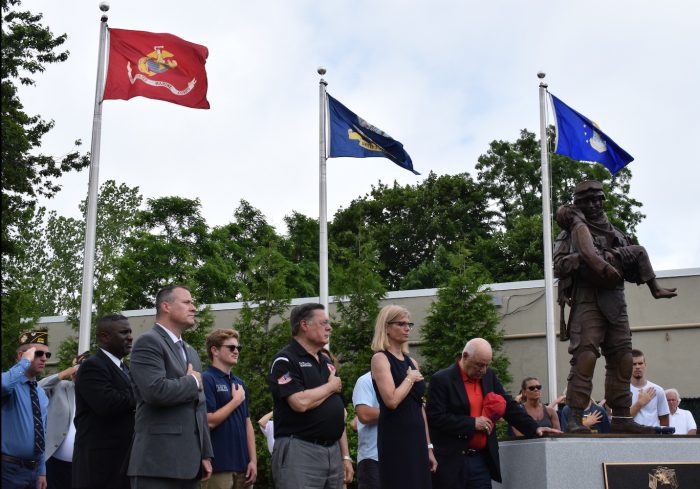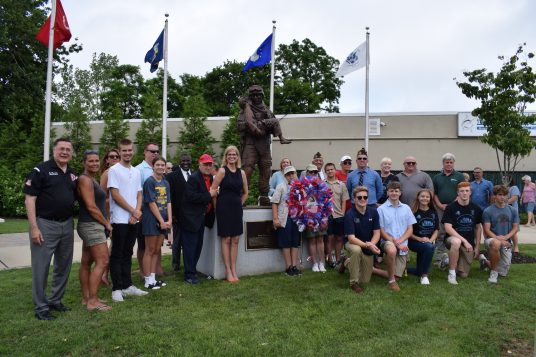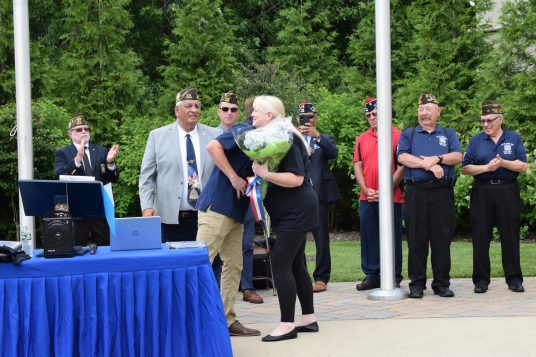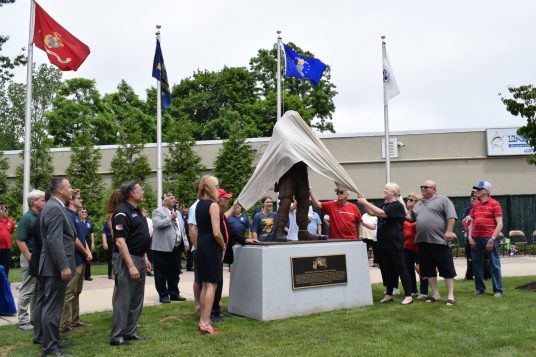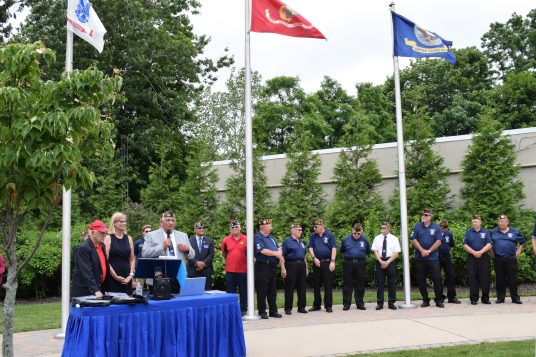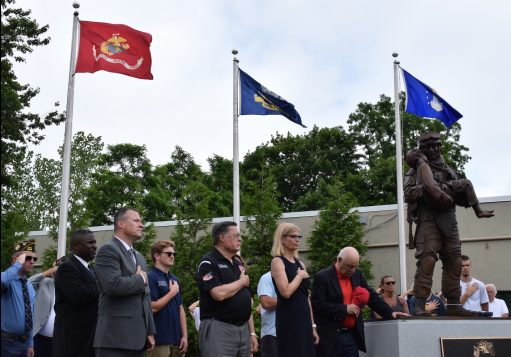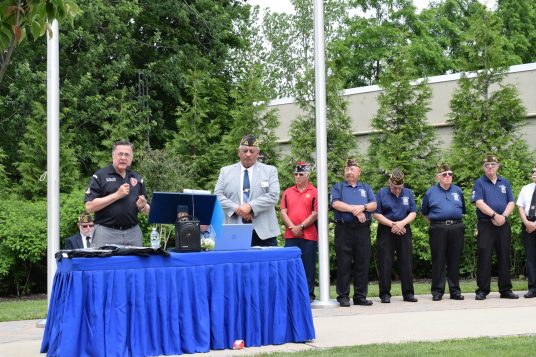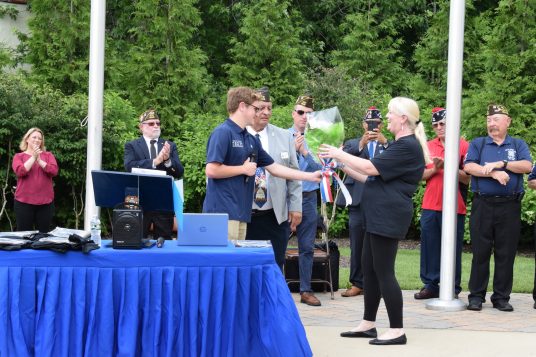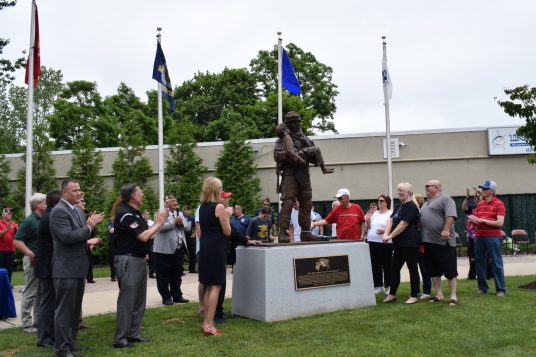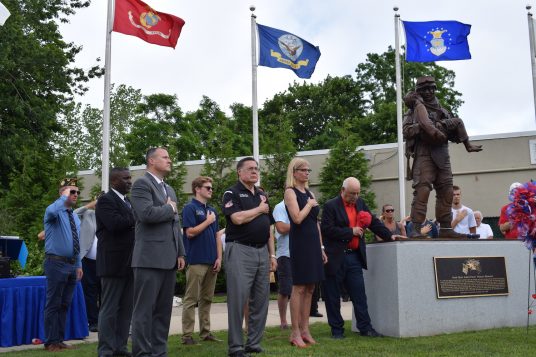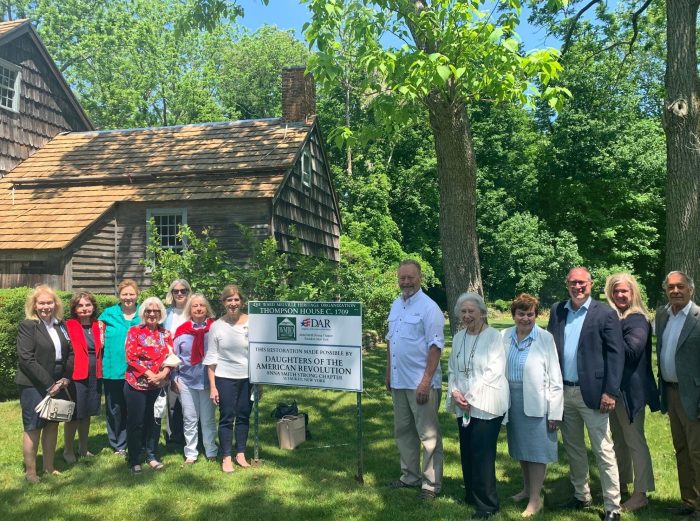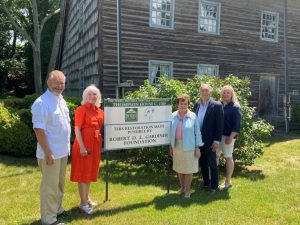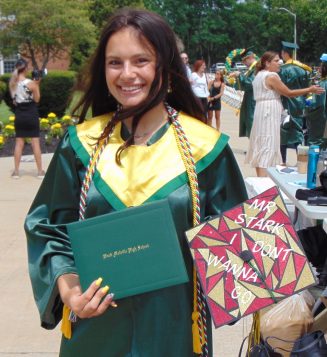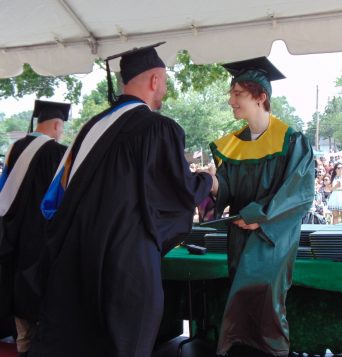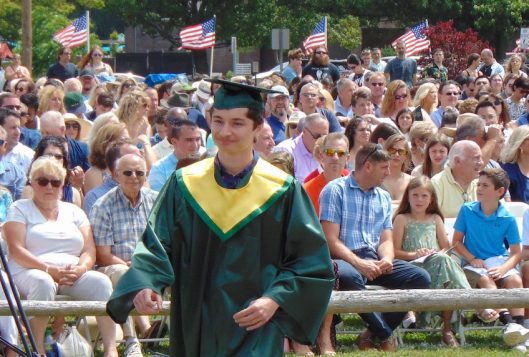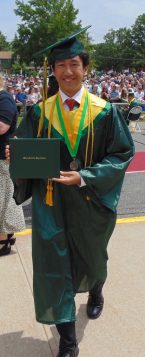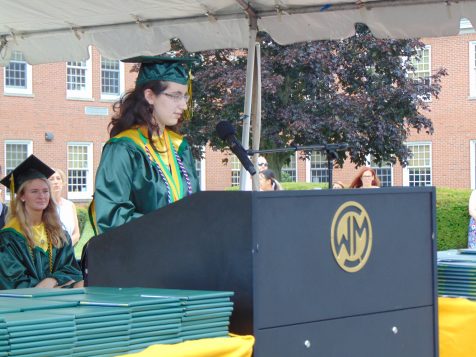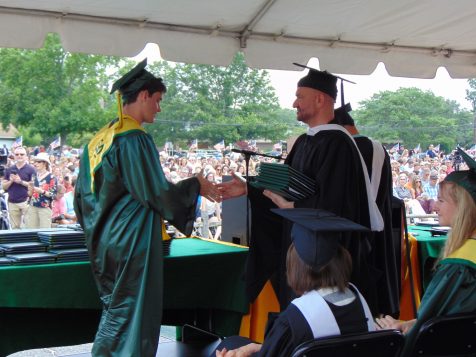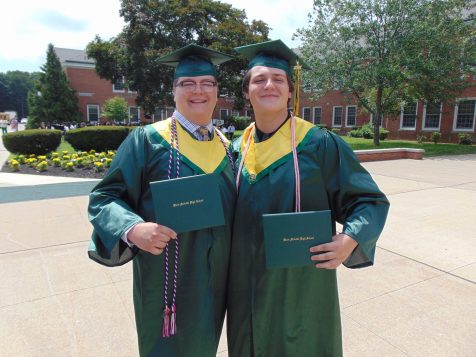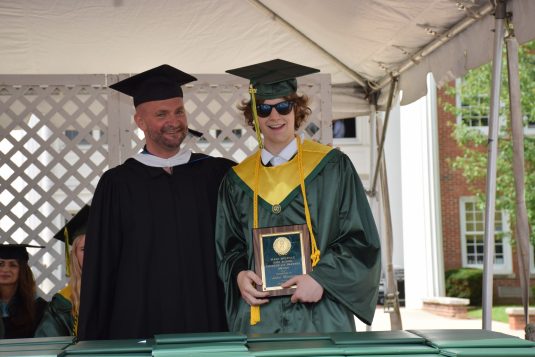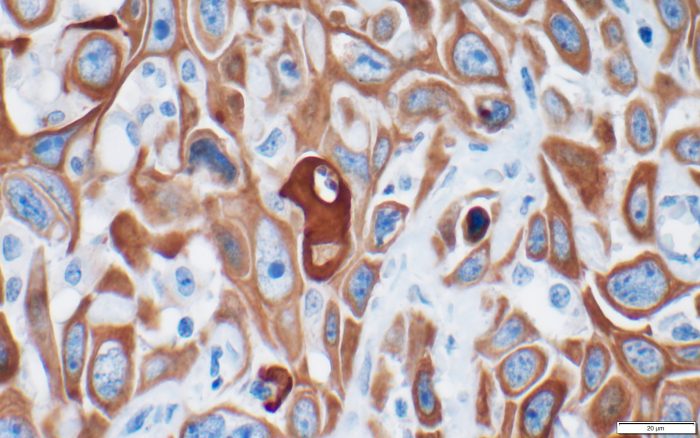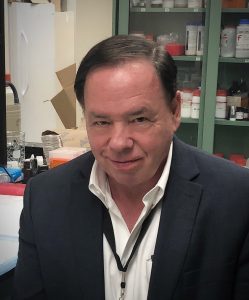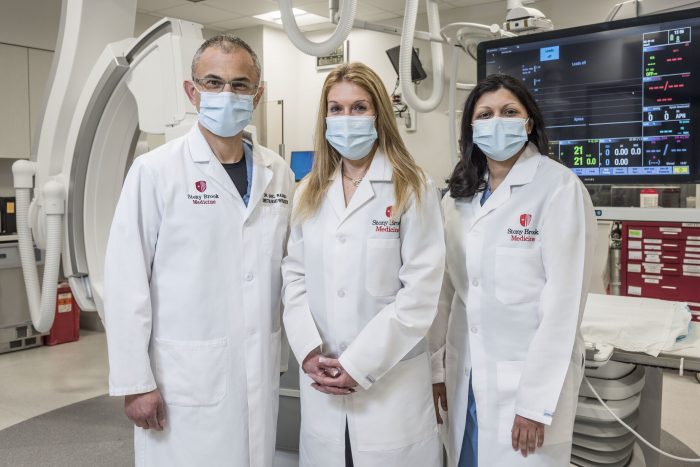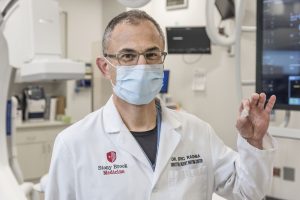Sometimes there are other events that happen Down Port that require assistance.
Along with the car accidents, fires, and animal rescues, the Port Jefferson Fire Department had to get innovative last week when a 14-year-old girl accidentally got locked in a dressing room.
At approximately 1 p.m. on June 22, Suffolk County Police 6th Precinct officers responded to Kate and Hale, located at 227 Main Street, to help Giavanna Diesso, of Hauppauge, get out of an unusual situation.
Diesso’s mother, Danielle, said that while she was checking out at the counter, Giavanna was finishing inside the dressing room — which nearly a century ago was the First National Bank of Port Jefferson bank vault.
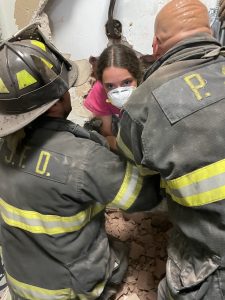
When her friend, Ava, 14, left the dressing room, the group joked that they should lock Giavanna in — and her 7-year-old brother Vincent took it literally, giving the door a shove.
“The door shut, and I was terrified,” Danielle said. “I wasn’t sure how long it would take to get her out. I wasn’t sure of the measure they would need to go in order to get her out. I was concerned about air, concerned about her feeling safe, but she maintained such composure. It’s unbelievable.”
The teen stayed cool and collected while the fire department headed inside to assess.
“I was just wondering how long it might take before someone would come to get me out,” Giavanna said.
The department headed into the store, where her family and friends were frantically worried.
“The first arriving rig was our rescue seven, and obviously as soon as they walked in, they realized something was going on,” said third assistant chief Steve Erland.
The team assessed that Giavanna was safe inside and had plenty of oxygen. Then, they got to work.
“Once we knew she had air, we were able to step back and kind of reevaluate, and take the time, to come up with a plan,” he said.

Through the metal door, firefighter Tom Meehan asked the girl to record her surroundings with her iPhone to see how much room they had as they planned a way out.
“She was great,” Meehan said. “She followed directions.”
Ex-chief Brennan Holmes got the air chisel off from the rescue truck to work on the 100-year-old wall. When the first hole was made, he was able to see Giavanna inside, where he was able to assess how big the next opening should be. Through the hole, they handed her a bottle of water and an N95 mask.
With some more chiseling, Holmes and Captain Christian Neubert were able to pull her out — which was caught on film and has since gone viral online.
“This is not something anybody does every day,” Homes said. “But once that first hole was through, and we were able to see her and realize everything was going to work out, it was a great feeling.”
Joined with help from the Terryville Fire Department, Erland said the whole rescue took about 90 minutes.
And considering this type of event is not something firefighters are typically trained for; they were proud of how it all ended up.
“What makes it odd or challenging is this is not something we’ve ever practiced or talked about,” Neubert said. “We’ve never talked about, like, all right … what do we do if we get a girl locked up in a dressing room?”
But with teamwork, the whole procedure went smoothly.
Holmes said the closest training they would typically get in a similar nature would be for a building collapse — so that’s why a plan was needed from the start.
“Having a plan was the big step one because we don’t normally do that,” he said. “But then when it was breaking concrete, we knew that we could do this.”

Danielle was happy to have her daughter out and said she will forever be grateful to the Port Jefferson Fire Department.
“First responders certainly are not given the credit and gratitude that they really deserve,” she said. “They leave their families to come across a situation. They’re not even probably 100% sure what they’re getting into so, it’s incredible.”
While the tale of Giavanna and the vault has made national headlines since her Tuesday rescue, Holmes said it was a happy ending.
“It worked out,” he said. “And that’s the best part of the whole story.”
The Port Jefferson Fire Department is always looking for volunteers. If interested, visit them on Facebook or call 631-473-8910.

